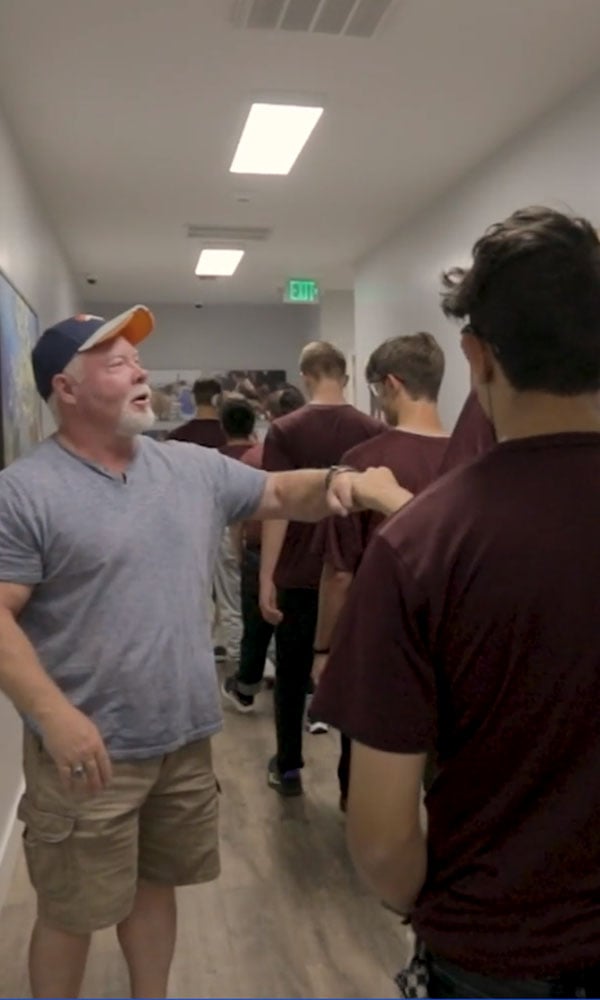
It is important to understand your son's behaviors in terms of "risk". Risk is determined by the efforts your teen takes to avoid structure or rules created by you to extinguish his bad behaviors. To give an example, imagine a scenario where a teen uses his family's computer to view pornography. In response, his parents put a block on their computer. If this teen hacks through the block to continue access, he puts a trusting relationship with his parents at risk. Continuing this scenario, imagine his parents taking away their internet service. After that, they catch their son using their neighbor’s home to access porn on their computer. This behavior is not just risking parental trust, but also neighbor relationships and potential legal action. This teen is willing to take risks associated with continuing his behavior even after it causes familial and/or social consequences. Below are some guidelines that can help you compare what is common and normal among adolescents and what is not.

We're Here To Help. Recovery Is Possible.
Your teen can recover from sexual behavioral problems. Contact one of our trained representatives for a free, private consultation
Common Adolescent Sexual Behaviors
There may be emotional consequences associated with some of these behaviors. If needed, outpatient treatment should be sufficient.
- Sexually explicit conversations with peers
- Obscenities and jokes within the cultural norm
- Sexual innuendos
- Flirting and courtship
- Interest in erotica
- Solitary masturbation
- Hugging, kissing, holding hands
- Foreplay (petting, making out, fondling) and mutual masturbation. There may be moral, social, religious, or familial rules that discourage this behavior, but these behaviors are not abnormal or illegal when private, consensual, equal, and non-coercive.
- Monogamist intercourse: Stable monogamy is defined as a single sexual partner throughout adolescence. Serial monogamy indicates long-term (several months or years) involvement with a single partner which ends and is then followed by another. Once again, there may be moral, social, religious, or familial rules that discourage this behavior, but these behaviors are not abnormal or illegal when private, consensual, equal, and non-coercive.

Yellow Flags
Although some of these yellow flag behaviors are not necessarily outside the range of behavior exhibited in teen peer groups, there should be a serious assessment made in order to rule out any “red flag” and/or illegal behaviors. When they are exhibited in the context of more than one issue that is listed below, or patterns develop, please seek further evaluation.
- Sexual preoccupation/anxiety (interfering in daily functioning)
- Pornographic interest (type is a factor, like bestiality, child, violent)
- Sexual intercourse/promiscuity (indiscriminate sexual contact with more than one partner during the same period of time)
- Sexually aggressive themes/obscenities
- Sexual graffiti (especially chronic and impacting individuals)
- Embarrassment of others with sexual themes
- Violation of others' body space
- Pulling skirts up/pants down
- Single occurrence of peeping, exposing with known peers
- Mooning and obscene gestures
- Masturbation to underwear (very common)

Red Flags
Red flag behaviors need further specialized evaluation. Boys rarely just have one red flag problem and will usually reveal patterns involving multiple yellow and red flag behaviors upon further inspection.
- Compulsive masturbation (especially chronic or public)
- Degradation/humiliation of self or others with sexual themes
- Attempting to expose others' genitals
- Chronic preoccupation with sexually aggressive pornography
- Sexually explicit conversations with significantly younger children
- Obscene phone calls, voyeurism, frottage, exhibitionism, sexual harassment
- Touching genitals without permission (i.e., grabbing, goosing)
- Sexually explicit threats (verbal or written)
- Sexual contact with a significant age difference (sibling, neighbor, relative)
- Coerced sexual contact
- Coerced penetration
- Sexual contact with animals (bestiality)
- Sexting (the use of electronic devices to send sexually explicit photos of oneself or others)

You Have Questions, We Have Answers. Your Call is Confidential.
Oxbow Academy is fully operational during the COVID-19 crisis. Contact us if you need help with treatment for sexual addiction, sexual abuse, pornography abuse and other compulsive behavior issues.
Many parents find it difficult to tell healthy curiosity about sex from a potentially dangerous situation. There are clinical evaluations that can help make that determination easier. One of these evaluations is the Sexual Addiction Screening Test (SAST).
On the SAST, you will answer a series of simple yes or no questions about their teen. The answers are completely confidential. No information connects you to your assessment. After you complete the SAST, you will be taken to a new page that shows a score representing the level of risk.
After you get your score, you will have the chance to request a call from someone who can help answer your questions. You will only be contacted if you make a request. Whether you request a call or not, your information will remain confidential, and you will be under no obligation.

